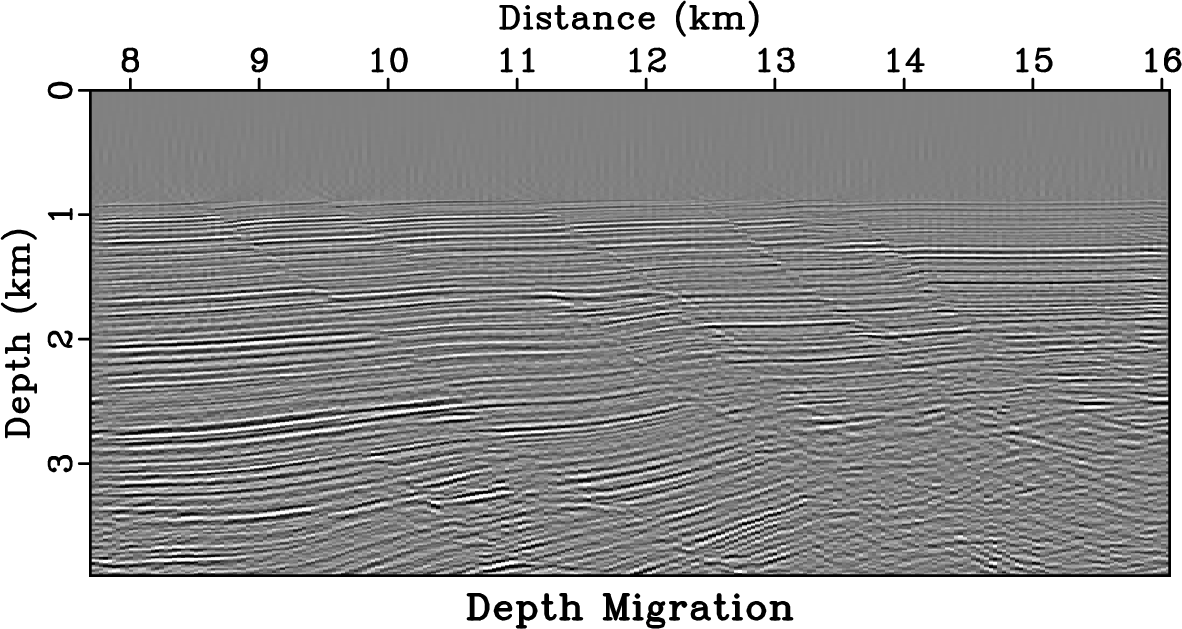|
|
|
|
Wave-equation time migration |



|
|---|
|
dstack-gulf,vnmo-gulf,vinv-gulf
Figure 11. (a) Stacked section for Gulf of Mexico field data. (b) Time-migration velocity, and (c) Dix velocity. |
|
|


|
|---|
|
kpstm,wetm1f
Figure 12. (a) Image obtained using Kirchhoff time migration , and (b) Image obtained using wave-equation time migration using RTM in image-ray coordinates. Faults marked as F1, F2, F3, F4 and F5 are clearly delineated with the proposed method as compared to the conventional time migration. |
|
|



|
|---|
|
refdixgom,alphagom,betagom
Figure 13. The inputs for time to depth conversion of velocities for the Gulf of Mexico field data example: Dix velocity squared |
|
|


|
|---|
|
imagerays,finalvgom
Figure 14. (a) Image rays (curves of constant |
|
|


|
|---|
|
finalmapdgom,rtm
Figure 15. (a) Image obtained using wave-equation time migration after conversion to Cartesian coordinates. (b) Image obtained using depth migration using RTM in Cartesian coordinates. |
|
|
|
|
|
|
Wave-equation time migration |